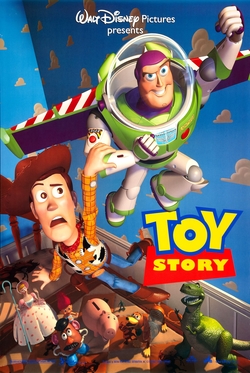The MIT Media Lab is founded by Nicholas Negroponte.
The UK-based company Quantel introduces its Paintbox.
1981
IBM introduces the first IBM PC (16 bit 8088 chip).
1982
Jim Clark founds Silicon Graphics Inc (SGI).
Sun (Stanford University Network) Microsystems is founded.
1983
The SGI IRIS 1000 graphics workstation is launched.
Harold Cohen exhibits work produced with his AARON Computer program at London's Tate Gallery.
1984
The first Macintosh computer is sold.
Soft Computing by Brian Reffin is published.
1985
Commodore launches its first Amiga model.
1986
Softimage is founded by Daniel Langlois in Montreal. This Company pioneered software that delivered real-time 3D rendering.
BBC produces Paitning with Light. In the program, artists such as David Hockney, Howard Hodgkin, Richard Hamilton, Sir Sydney Nolan, and Larry Rivers are invited to use the Quantel Paintbox.
 Andy Warhol uses Amiga to produce a self-portrait and portrait of singer Debbie Harry (pictured right).
Andy Warhol uses Amiga to produce a self-portrait and portrait of singer Debbie Harry (pictured right).1988
Art and Computers exhibition is held at the Cleveland Gallery, in Middlesbrough, UK.
1989
Adobe releases its paint software Photoshop (this may not be entirely accurate, as other sources suggest an official release in February, 1990).
1990
Microsoft ships its Windows 3.0 operating system.
1991
Sir Tim Berners-Lee develops the World Wide Web at CERN (European Organisation for Nuclear Research).
Jeffrey Shaw's The Legible City is exhibited at ZKM (Center for Art and Media, Karlsruhe).
1992
Quicktime is introduced by Apple.
The first New York Digital Salon is opened (US). In conjunction with the MIT publication Leonardo, this provides an annual showcase for artists exploring the possibilities of digital technology.
1993
GPS (Global Positioning System) is launched. This is operated and maintained by the US Department of Defense and uses the combined facility of 24 satellites.
Wired magazine launches in the US.
The video game Doom is released. This game pioneered the use of 3D graphics within a gaming context (as I have pointed out in previous posts, Doom was also responsible for fathering the first-person shooting genre, as well as introducing violence and horror to gaming).
Myst is released by Cyan Worlds Inc and becomes the top-selling game of all time.
1994
Netscape browser is made available (pictured right).
1995
Toy Story by Pixar is released. 3D computer graphics are used to enhance character and narrative within a mainstream film and not only for special effects (pictured below).
Internet Explorer 2.0 is launched.
The Sony Playstation is introduced.
Sun introduces its Java programming environment.
1996
ID Software's Quake hits the game market.
Macromedia buys FutureSplash Animator from FutureWave Technologies. This will later become Flash.
Steve Dietz becomes Curator of New Media at the Walker Art Center in Minneapolis MS.
Pter Weibel becomes director of ZKM (Center for Art and Media) in Karlsruhe, Germany.
Being Digital by Nicholas Negroponte (founder of MIT Lab) is published.
Rhizorne.org, a non-profit affiliation of artists using computer technologies in their work, is founded in the US.
1997
Flash 1.0 is released by Macromedia
The Serious Games exhibition is held at the Barbican Art Gallery in London.
1998
Alias releases Maya 3D software for modelling and animation.
2000
The 010101 Art in Technological Times exhibition is held at the Barbican Art Gallery in London.
Sony's Playstation 2 (PS2) is launched (pictured below).
2001
Microsoft's Xbox and Nintendo's GameCube games consoles are released (pictured below).
Art and Money Online exhibition is held at the Tate Britain in London.
2003
Alias/Wavefront becomes Alias.
2005
Adobe purchases Macromedia for US $3.4 billion.



No comments:
Post a Comment